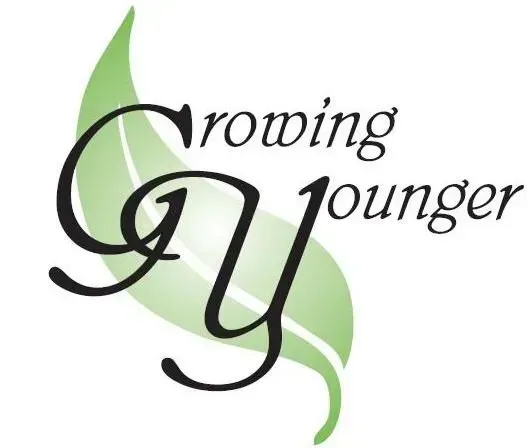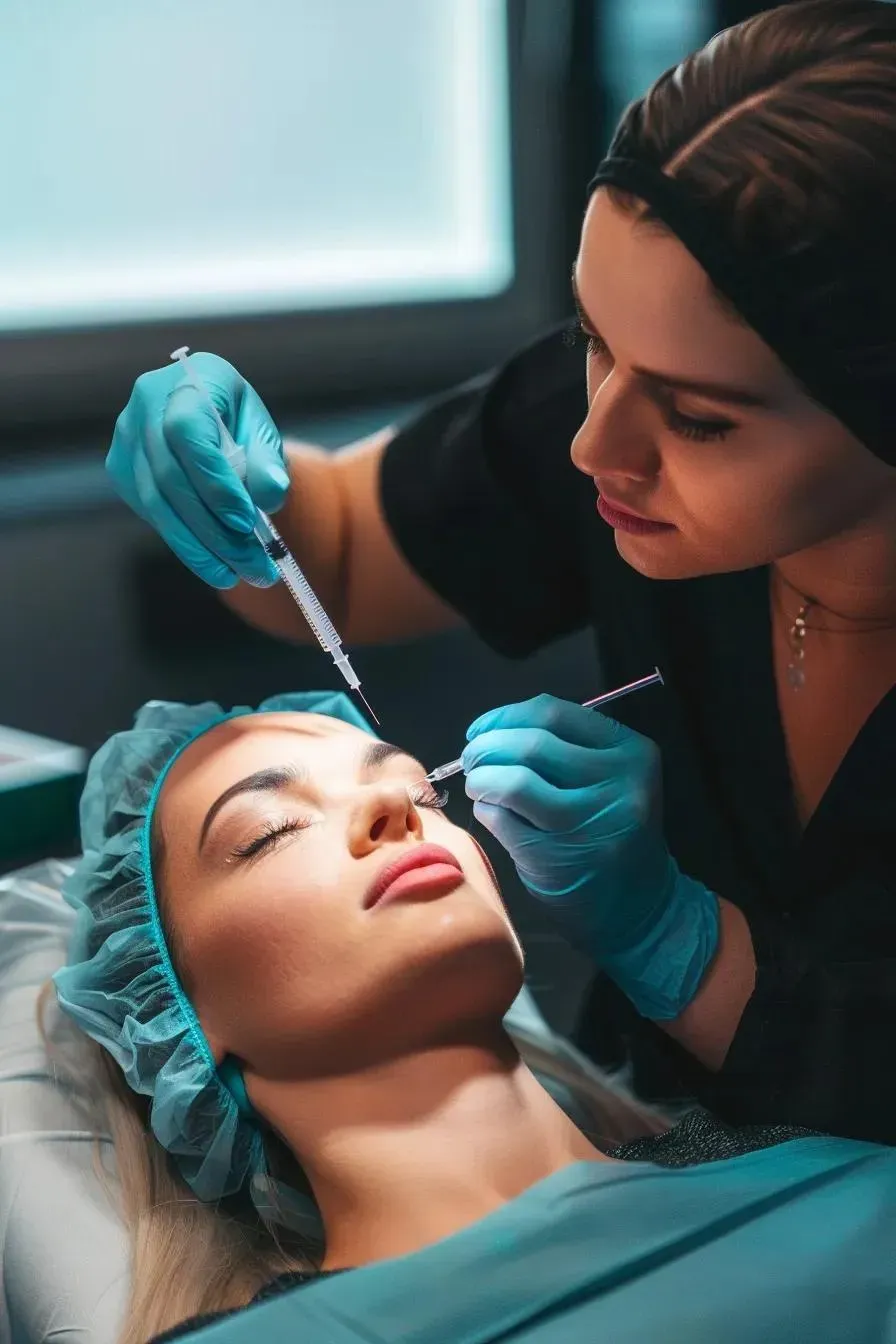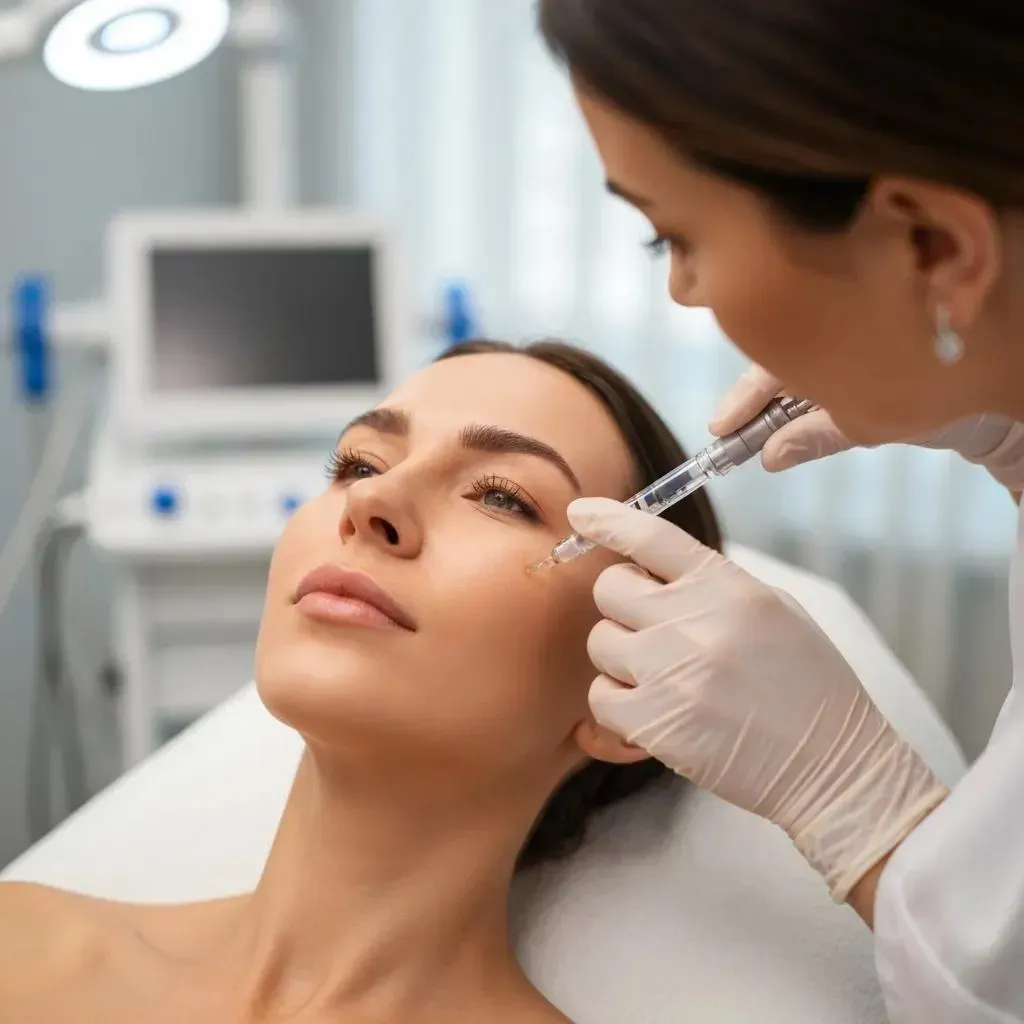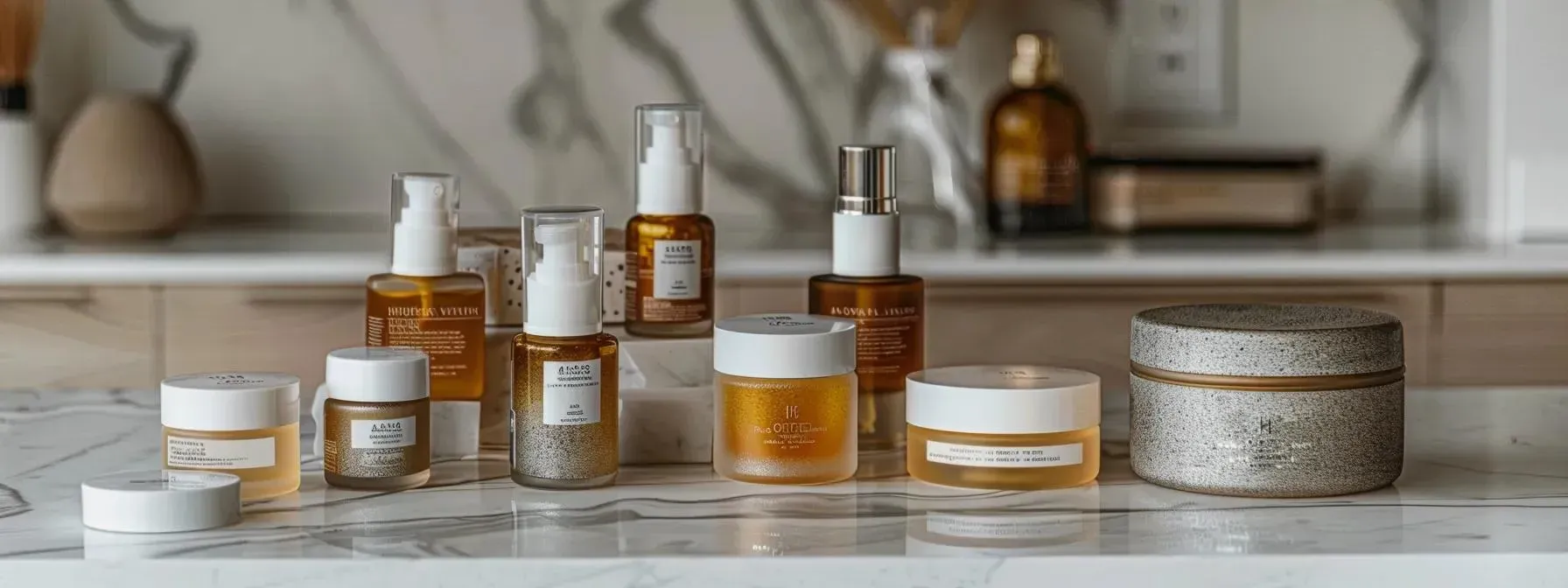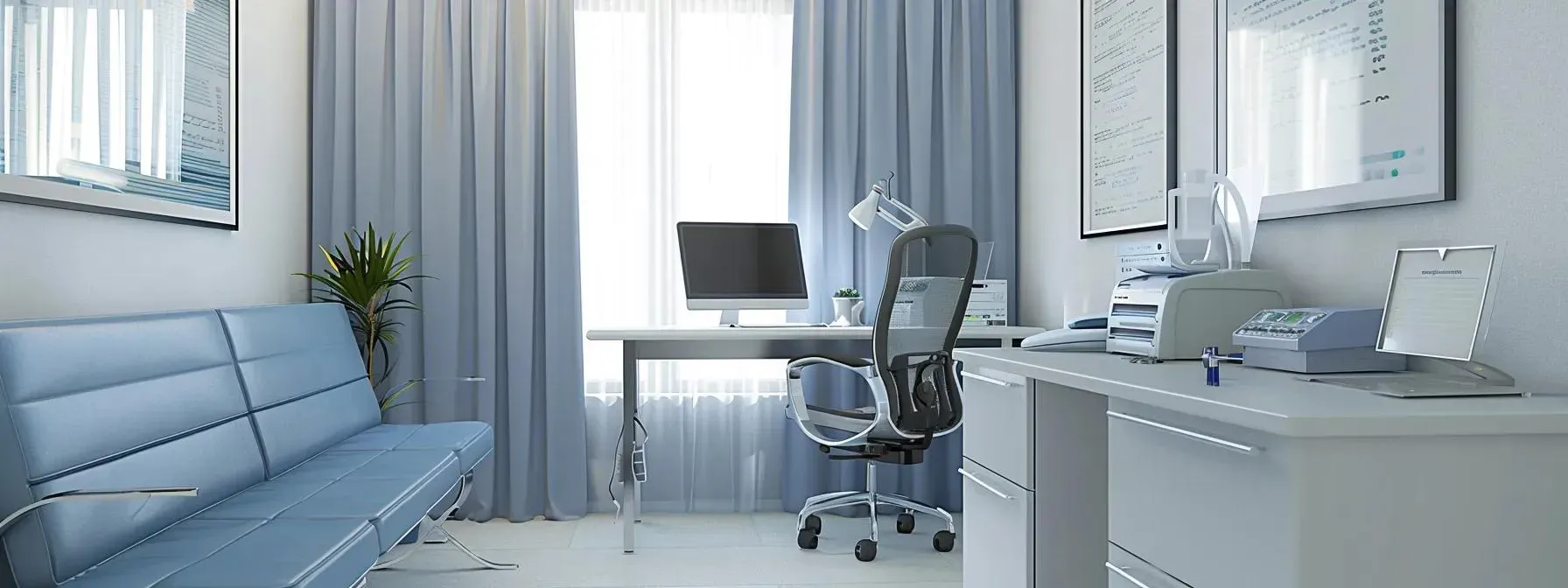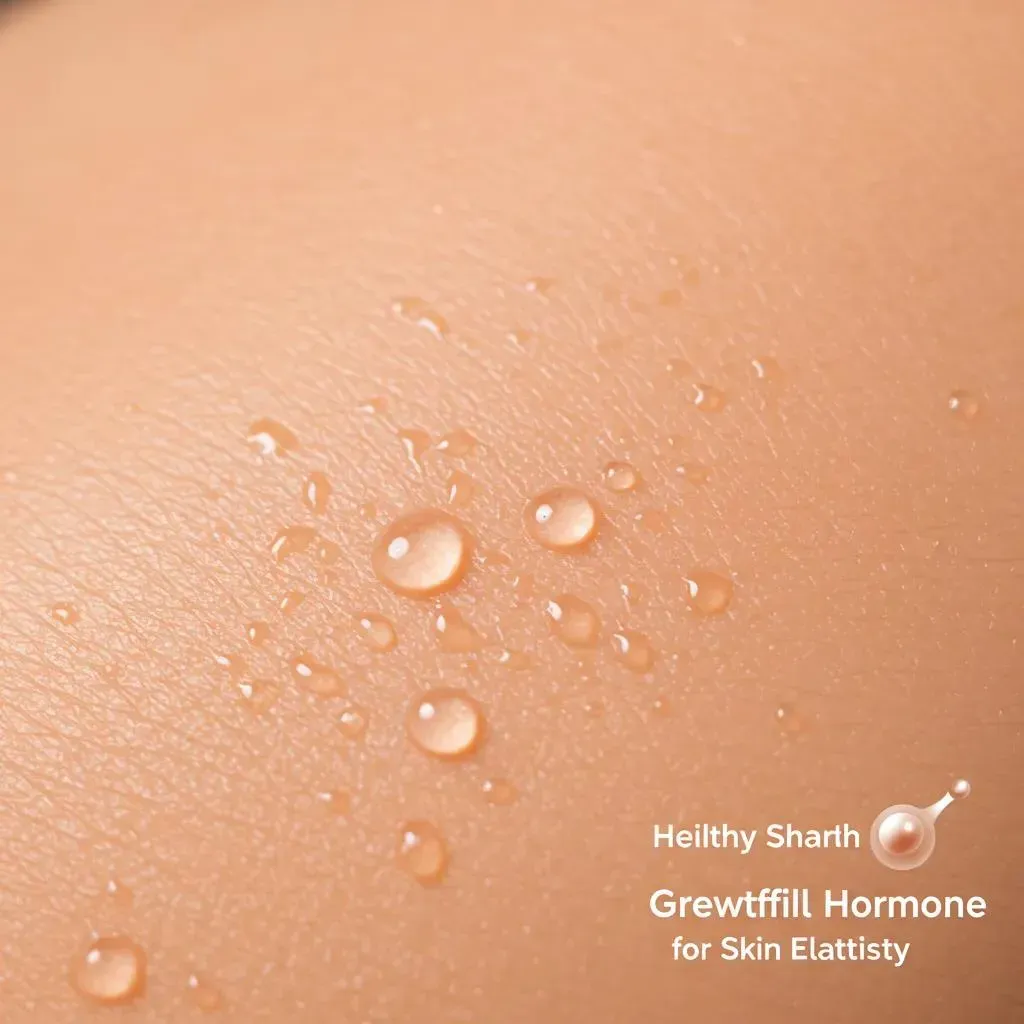Discover the Hidden Benefits of Professional Massage Therapy
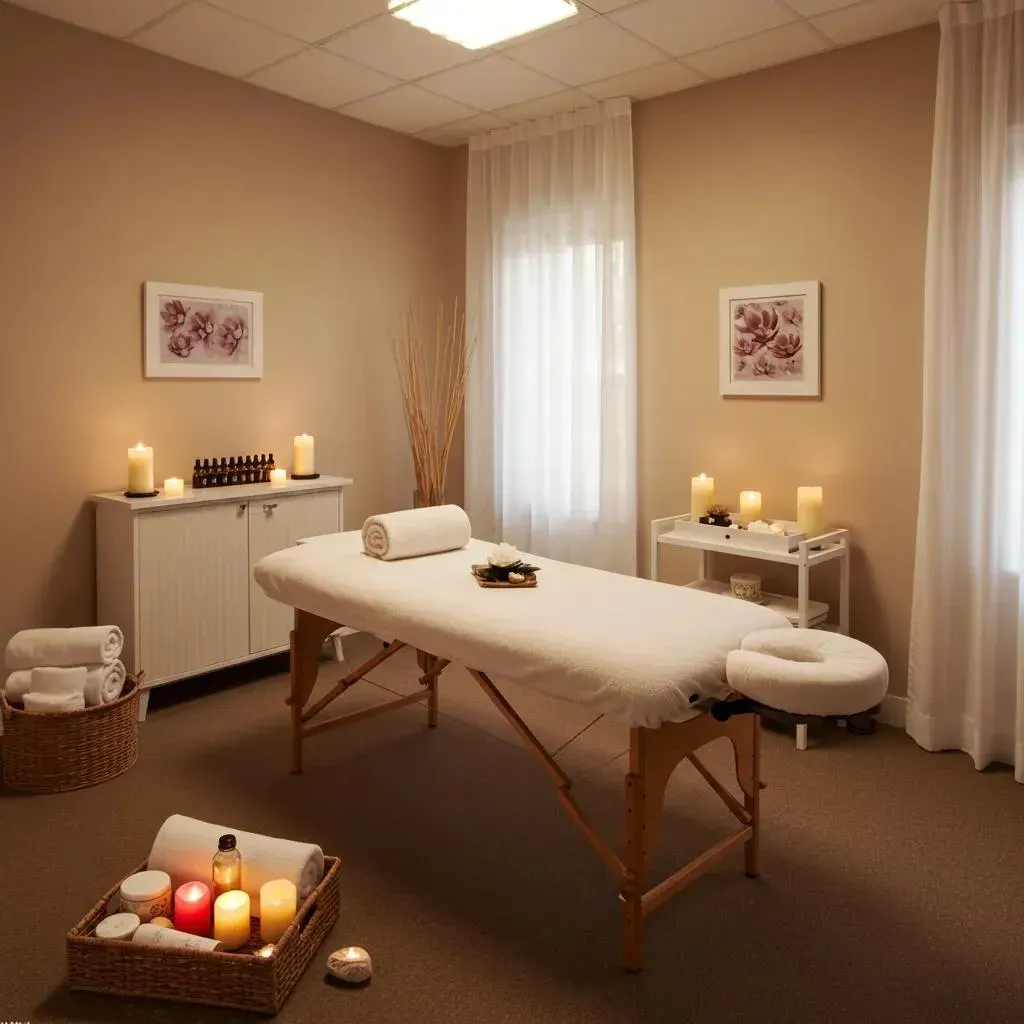
Expert massage therapy unlocks a wealth of health benefits by employing specialized bodywork techniques to enhance circulation, ease muscle tension, and promote cellular rejuvenation. In this guide, you’ll explore how skilled therapeutic touch at Growing Younger Clinic LLC addresses stress, discomfort, skin aging, weight management, safety considerations, and the ideal frequency for treatments, all while featuring genuine client success stories. You will learn the science behind stress relief, the role of specific massage styles in anti-aging, how massage can boost your metabolism, the various professional massage options available, who benefits most or needs to exercise caution, and how often to schedule sessions for maximum impact. By the end, you will fully grasp why professional massage therapy is a cornerstone of wellness, aesthetic enhancement, and pain relief—and how you can book a complimentary consultation to embark on your personalized wellness journey.
What Are the Key Benefits of Professional Massage Therapy?
Professional massage therapy is a methodical approach to bodywork that combines manual manipulation with physiological processes to deliver stress relief, improve tissue function, and accelerate recovery. It works by reducing circulating cortisol levels through parasympathetic nervous system activation, stimulating venous and lymphatic return to clear metabolic byproducts, and relaxing myofascial tissues to alleviate pain while restoring range of motion. Below is a clear outline of its primary advantages.
Here is a brief list of the main outcomes clients experience when receiving targeted massage interventions:
- Stress Reduction and Deep Relaxation: Activating the parasympathetic nervous system lowers cortisol, inducing profound relaxation and mental tranquility.
- Enhanced Circulation: Manual pressure and rhythmic movements improve blood flow and oxygen delivery to tissues.
- Pain Relief: Myofascial release and trigger point techniques interrupt pain signals and ease muscle tightness.
- Improved Flexibility: Gentle stretching and soft tissue mobilization increase joint mobility and muscle suppleness.
- Better Sleep Quality: The body’s relaxation response supports restorative sleep cycles and overall resilience.
These fundamental benefits pave the way for specialized applications in anti-aging and weight management, leading us to understand how massage effectively reduces stress and fosters deeper relaxation.
How Does Massage Therapy Reduce Stress and Promote Relaxation?
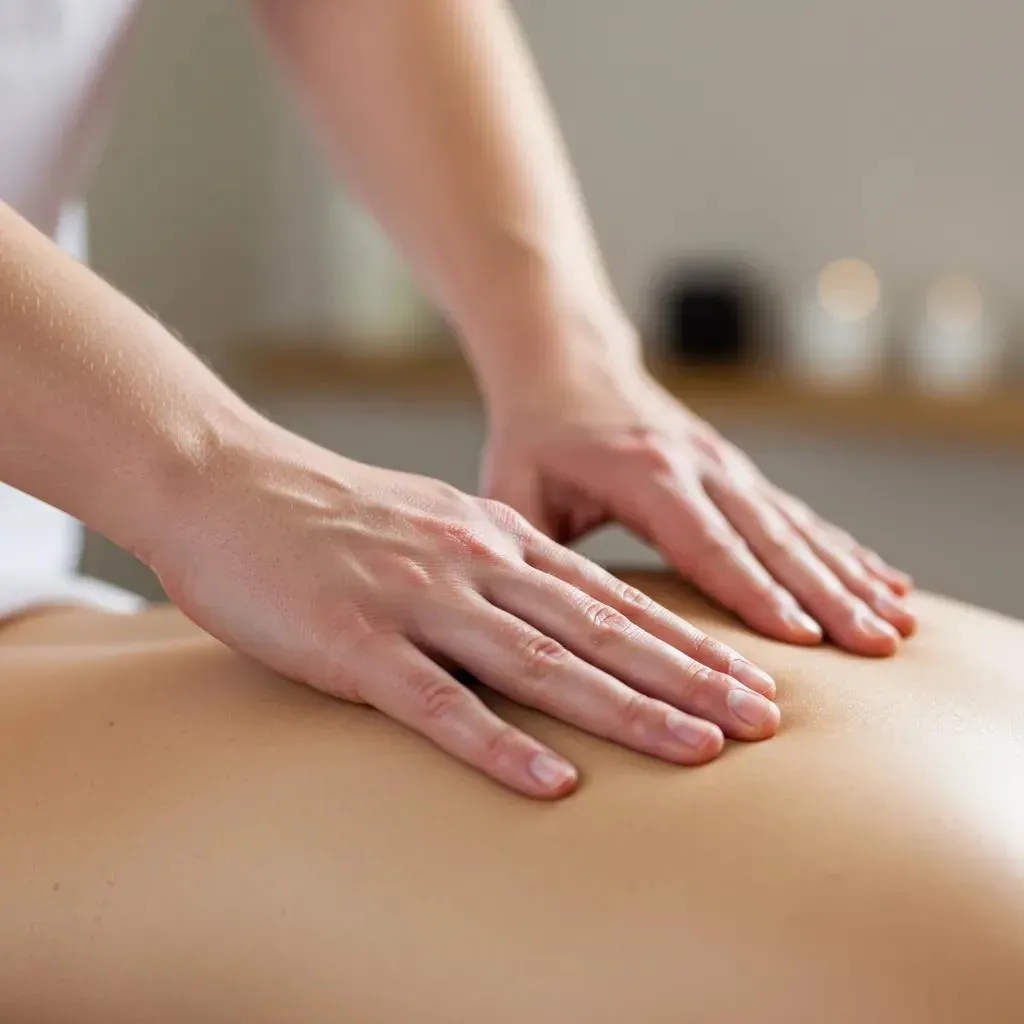
Massage therapy alleviates stress by engaging the parasympathetic nervous system, initiating a series of biochemical and neurological responses that calm both the mind and body. When pressure is applied to muscle fibers and connective tissues, specialized receptors send signals that decrease the production of stress hormones while increasing the release of endorphins, leading to immediate relaxation. Clients frequently report a significant decrease in anxiety and an enhanced capacity for mental clarity.
Key mechanisms include:
- Parasympathetic Activation – Stimulates the "rest-and-digest" functions, lowering heart rate and blood pressure.
- Cortisol Modulation – Reduces stress hormone levels, lessening physiological strain.
- Endorphin Release – Increases natural pain relievers and mood elevators, promoting sustained calm.
Through these neurochemical pathways, massage helps the nervous system become more resilient, which naturally leads us to explore how improved circulation and lymphatic flow further contribute to overall well-being.
In What Ways Does Massage Improve Circulation and Lymphatic Flow?
Massage enhances circulation by applying rhythmic pressure that gently compresses and releases blood vessels, improving arterial blood supply and venous return. Simultaneously, specific strokes along lymphatic pathways encourage fluid drainage, reducing swelling and supporting immune function. Increased blood flow efficiently delivers oxygen and nutrients while removing waste products, thereby accelerating tissue repair and reducing inflammation.
Below is a comparison of how massage influences the vascular and lymphatic systems:
| Modality | Circulatory Effect | Lymphatic Impact |
|---|---|---|
| Effleurage and Petrissage | Boosts arterial inflow to muscles | Gently guides interstitial fluid toward lymph nodes |
| Deep Tissue Compression | Enhances capillary exchange | Helps release superficial lymphatic vessel adhesions |
| Lymphatic Drainage Techniques | Supports venous return | Directly encourages lymphatic vessel contraction |
These improvements in circulation and lymphatic function lay the groundwork for deeper muscle relaxation and pain relief, which we will explore next.
How Does Massage Therapy Alleviate Muscle Pain and Enhance Flexibility?
Massage therapy eases muscle pain by interrupting pain signal pathways through sustained pressure on trigger points and by reducing muscle tightness via myofascial release. The mechanical stretching of fascia and muscle fibers increases joint mobility, supports ligament suppleness, and restores normal tissue pliability. Clients often report a noticeable decrease in stiffness and an improved ability to move with greater ease after targeted sessions.
Key benefits include:
- Trigger Point Deactivation – Applies pressure to hyperirritable spots to reduce localized soreness.
- Myofascial Release – Stretches fascial layers to improve movement between muscle groups.
- Neuromuscular Reeducation – Guides muscle patterns toward balanced tension and optimal length.
By combining these techniques, professional massage therapy promotes both pain relief and enhanced flexibility, preparing the body for specialized anti-aging applications that support skin health and cellular renewal.
How Can Massage Therapy Support Anti-Aging and Skin Rejuvenation?
Massage therapy aids in the anti-aging process by stimulating fibroblast activity, enhancing the synthesis of collagen and elastin, and accelerating cellular turnover through improved microcirculation. Mechanotransduction—the process of converting mechanical stimuli into biochemical signals—promotes skin firmness and resilience. Regular professional treatments contribute to a more radiant complexion and reduce visible signs of aging by addressing cellular health at the dermal level.
What Are the Benefits of Facial Massage for Youthful Skin?
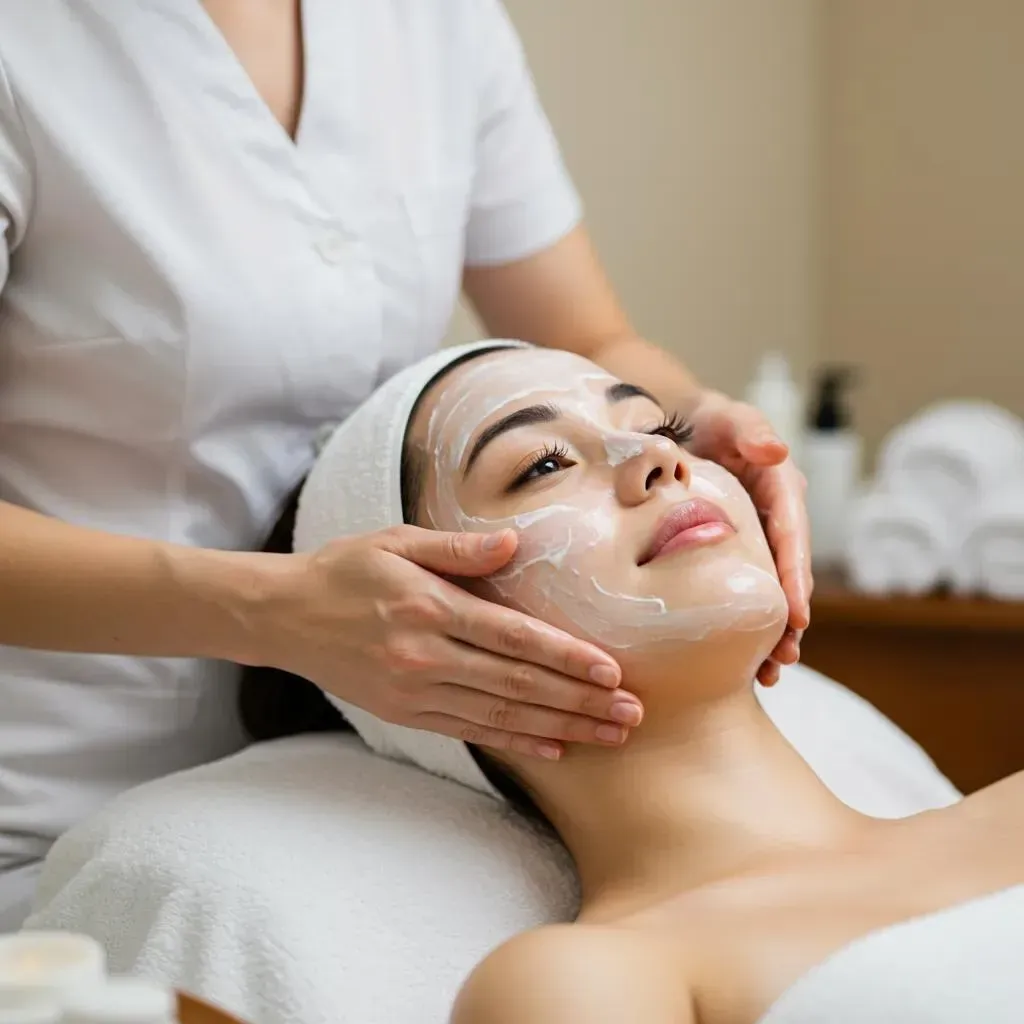
Facial massage combines gentle gliding strokes, tapping, and kneading to boost blood flow, oxygenate skin cells, and encourage lymphatic drainage. By delivering nutrients more effectively and removing metabolic waste, this technique refines skin tone, texture, and elasticity. Clients report a reduction in fine lines, improved facial contour, and a lifting effect on sagging tissues after consistent sessions.
Key outcomes include:
- Enhanced Collagen Production – Mechanical stimulation prompts fibroblasts to generate structural proteins.
- Improved Elasticity – Targeted strokes support the alignment of elastin fibers for firmer skin.
- Hydration Balance – Promotes better moisture retention and skin barrier function.
These benefits demonstrate how facial massage serves as a vital component of a comprehensive anti-aging strategy, leading us to the role of lymphatic drainage in detoxification and cellular renewal.
How Does Lymphatic Drainage Massage Aid Detoxification and Cellular Renewal?
Lymphatic drainage massage utilizes light, rhythmic movements along superficial lymphatic pathways to speed up toxin removal and fluid balance. By clearing excess interstitial fluid and supporting the transport of immune cells, it minimizes puffiness, reduces chronic inflammation, and creates an optimal environment for cellular repair.
Enhanced detoxification contributes to brighter, more even-toned skin and supports long-term anti-aging results.
Mechanisms at work:
- Fluid Mobilization – Encourages stagnant lymph to move toward active lymph nodes.
- Inflammation Reduction – Clears inflammatory agents, promoting healthier tissues.
- Immune Support – Enhances pathogen filtration and the transport of immunoglobulins.
With optimized detoxification, massage-driven pathways converge toward collagen synthesis and improved skin tone, which we will explore next.
Can Massage Therapy Boost Collagen Production and Improve Skin Tone?
Massage therapy enhances collagen production by applying controlled mechanical forces that stimulate growth factors and matrix metalloproteinases, promoting dermal remodeling. Improved microcirculation delivers nutrients more effectively, supporting fibroblast function and encouraging uniform collagen deposition. Clients observe visibly firmer skin texture, reduced wrinkle depth, and a more luminous complexion.
Highlights include:
- Fibroblast Activation – Stimulates the cells responsible for collagen and elastin synthesis.
- Dermal Remodeling – Encourages organized extracellular matrix formation for resilient skin.
- Even Tone – Promotes the clearance of pigmentation by optimizing vascular exchange.
These anti-aging benefits integrate seamlessly with weight management strategies, underscoring massage’s role in holistic well-being.
How Does Massage Therapy Complement Weight Management and Metabolism?
Massage therapy supports weight management by reducing stress-induced cortisol surges that can trigger emotional eating and by boosting metabolic activity through enhanced circulation. Improved lymphatic clearance of lipids and metabolic waste products aids detoxification processes essential for healthy body composition. By addressing both psychological triggers and physiological barriers, massage reinforces sustainable weight-management efforts.
How Does Massage Help Reduce Stress-Related Emotional Eating?
Massage sessions lower cortisol and adrenaline levels, which often lead to cravings for high-carbohydrate foods during stressful periods. The activation of relaxation pathways fosters a sense of well-being that reduces reliance on emotional eating as a coping mechanism. Clients report fewer instances of binge eating and a more balanced appetite after incorporating regular massage into their routines.
Key processes include:
- Hormonal Regulation – Balances cortisol to stabilize energy and appetite signals.
- Mind-Body Connection – Cultivates mindfulness that interrupts unconscious eating habits.
- Emotional Release – Provides a healthy outlet for tension, lessening the need for food as comfort.
By addressing stress-related impulses, massage therapy lays the foundation for metabolic improvements that further support weight management goals.
In What Ways Does Massage Boost Metabolism and Support Detoxification?
Massage boosts metabolism by increasing local tissue temperature and stimulating mitochondrial activity through enhanced blood flow. This thermogenic effect elevates resting metabolic rate, contributing to calorie expenditure. Concurrently, lymphatic stimulation accelerates the removal of toxins that can hinder metabolic processes, promoting cleaner cellular function and more efficient nutrient utilization.
Below is a concise summary of these metabolic contributions:
| Outcome | Metabolic Effect | Underlying Process |
|---|---|---|
| Increased Tissue Perfusion | Elevated oxygen delivery for energy needs | Vasodilation and capillary recruitment |
| Thermogenic Response | Higher resting metabolic rate | Friction-generated heat and increased mitochondrial activity |
| Lymphatic Clearance | Reduced metabolic waste buildup | Enhanced lymphatic vessel contractions |
These mechanisms highlight massage’s dual role in emotional regulation and metabolic optimization before we turn to the specific modalities offered.
What Types of Professional Massage Therapy Are Offered and Their Specific Benefits?
Growing Younger Clinic LLC provides a variety of specialized massage modalities designed to meet distinct health and aesthetic objectives. Each technique utilizes unique pressure patterns and strokes to achieve targeted results, from deep tissue release to gentle lymphatic support. Selecting the appropriate modality ensures clients receive maximum benefits aligned with their individual wellness goals.
What Are the Advantages of Deep Tissue Massage for Chronic Pain Relief?
Deep tissue massage employs firm pressure and slow strokes to access deeper muscle and fascial layers. This approach targets persistent knots and adhesions by breaking down scar tissue and promoting the realignment of muscle fibers. Clients experiencing chronic back pain, tendonitis, or fibromyalgia often report significant reductions in discomfort and improved mobility.
Key benefits include:
- Adhesion Breakdown – Releases restrictions between muscle layers for freer movement.
- Scar Tissue Remodeling – Encourages proper tissue repair and alignment.
- Long-Term Relief – Reduces pain recurrence through structural improvements.
Deep tissue techniques naturally transition into gentler Swedish methods that focus on overall relaxation and mental well-being.
Myofascial Release for Chronic Low Back Pain: A Systematic Review
ABSTRACT: Myofascial Release for Chronic Low Back Pain: A Systematic Review and Meta-Analysis
1. Your research is the real superpower - learn how we maximise its impact through our leading community journals
Myofascial release for chronic low back pain: A systematic review and meta-analysis, 2021
How Does Swedish Massage Promote Relaxation and Mental Wellness?
Swedish massage utilizes long, gliding strokes, kneading, and gentle friction to stimulate surface circulation and calm the nervous system. This classic modality induces deep relaxation, reduces muscle tension, and enhances mood through the release of serotonin and dopamine. It is particularly effective for clients seeking stress relief and a restorative mind-body experience.
Core features include:
- Effleurage Strokes – Warms muscles and prepares tissues for deeper work.
- Petrissage Kneading – Improves circulation and alleviates stiffness.
- Tapotement Techniques – Invigorates muscles and uplifts energy.
As relaxation deepens, many clients opt for lymphatic drainage for aesthetic and health-focused outcomes.
What Are the Benefits of Lymphatic Drainage Massage for Aesthetic and Health Goals?
Lymphatic drainage massage applies light, rhythmic strokes following the direction of lymph flow to reduce fluid retention and detoxify tissues. This specialized technique benefits individuals recovering from surgery, experiencing chronic swelling, or seeking improved skin clarity. By facilitating toxin removal and strengthening immune function, it supports both health and cosmetic enhancements.
How Can Sports Massage Aid Recovery and Muscle Performance?
Sports massage incorporates compression, stretching, and trigger point release to optimize athletic performance and accelerate recovery. By addressing muscle imbalances, reducing delayed-onset muscle soreness, and improving flexibility, this modality helps athletes maintain peak function and prevent injuries. Post-event treatments speed up tissue repair and restore range of motion for a quicker return to training.
Having reviewed the primary massage modalities, we will now discuss who should consider professional massage therapy and any necessary precautions.
Who Should Consider Professional Massage Therapy and Are There Any Contraindications?
Professional massage therapy is beneficial for a wide range of health conditions, but it requires tailored approaches for certain individuals. When applied thoughtfully, it benefits those with chronic pain, individuals experiencing stress-related disorders, people seeking anti-aging support, and clients pursuing weight management goals. However, specific contraindications must be carefully considered to ensure safety and effectiveness.
What Health Conditions Benefit Most from Therapeutic Massage?
Individuals with the following conditions often experience significant improvements from regular massage interventions:
- Chronic Musculoskeletal Pain such as lower back pain, neck stiffness, and arthritis.
- Anxiety and Sleep Disorders through stress reduction and parasympathetic nervous system regulation.
- Edema and Lymphatic Disorders via targeted lymphatic drainage techniques.
- Post-Surgical Recovery to minimize swelling and support tissue healing.
- Circulatory Issues like poor peripheral circulation and discomfort from varicose veins.
By identifying these specific needs, practitioners can customize sessions for maximum positive impact.
Who Should Avoid or Consult a Doctor Before Getting a Massage?
Massage should be postponed or modified for individuals with:
- Deep Vein Thrombosis or Blood Clotting Disorders due to the risk of dislodging a clot.
- Severe Osteoporosis where bone fragility increases the risk of fractures.
- Fever or Infectious Skin Conditions that could potentially spread pathogens.
- Acute Inflammation or Open Wounds requiring medical stabilization first.
- Uncontrolled Hypertension or Cardiac Conditions without prior physician approval.
Consulting a healthcare provider ensures that therapeutic touch remains both safe and effective, guiding us toward optimal scheduling for lasting results.
How Often Should You Get Professional Massage Therapy for Optimal Results?
The ideal frequency depends on individual goals, tolerance levels, and the specific modality used. A personalized schedule balances treatment benefits with the body's recovery needs, ensuring positive adaptation without overstimulation.
What Is the Recommended Massage Schedule for Stress Reduction and Pain Management?
For chronic stress or persistent pain, a weekly to biweekly schedule often provides consistent relief and cumulative benefits. Initial treatment phases may involve two sessions per week for four to six weeks, followed by maintenance intervals every two to four weeks as tension and symptoms decrease.
How Does Frequency Vary for Anti-Aging and Weight Management Benefits?
Anti-aging and aesthetic goals typically respond well to monthly treatments, allowing adequate time for collagen remodeling and skin rejuvenation. For weight management support and metabolic enhancement, biweekly sessions help maintain hormonal balance and support detoxification processes, offering a rhythm that complements dietary and exercise plans.
With frequency guidelines established, real client experiences illustrate these outcomes in practice.
What Do Clients Say About Their Experience with Professional Massage Therapy at Growing Younger Clinic?
Client feedback consistently highlights transformative results in both wellness and aesthetic areas, reflecting the clinic’s dedication to personalized, evidence-based bodywork. These testimonials underscore the trust and effectiveness built through each therapeutic session.
How Have Clients Benefited from Massage for Pain Relief and Wellness?
Clients managing chronic back pain report a 60 percent reduction in discomfort after a series of deep tissue and myofascial release sessions, along with improved mobility and less reliance on pain medication. Others experiencing anxiety describe feeling calmer, sleeping more soundly, and resuming daily activities with renewed energy.
What Success Stories Demonstrate Massage’s Role in Anti-Aging and Aesthetic Improvements?
Individuals undergoing facial massage and lymphatic drainage at the clinic notice visibly firmer skin, reduced puffiness, and a radiant complexion within six weeks of treatment. Clients recovering from procedures appreciate accelerated healing and diminished bruising, confirming massage therapy’s value in comprehensive aesthetic care.
Regular professional massage therapy at Growing Younger Clinic LLC empowers adults in Madison, AL to achieve their wellness, anti-aging, and pain-relief objectives through targeted, expert bodywork. To discover how personalized massage can support your goals, schedule a complimentary consultation or appointment with our specialist team and begin unlocking the hidden benefits today.
